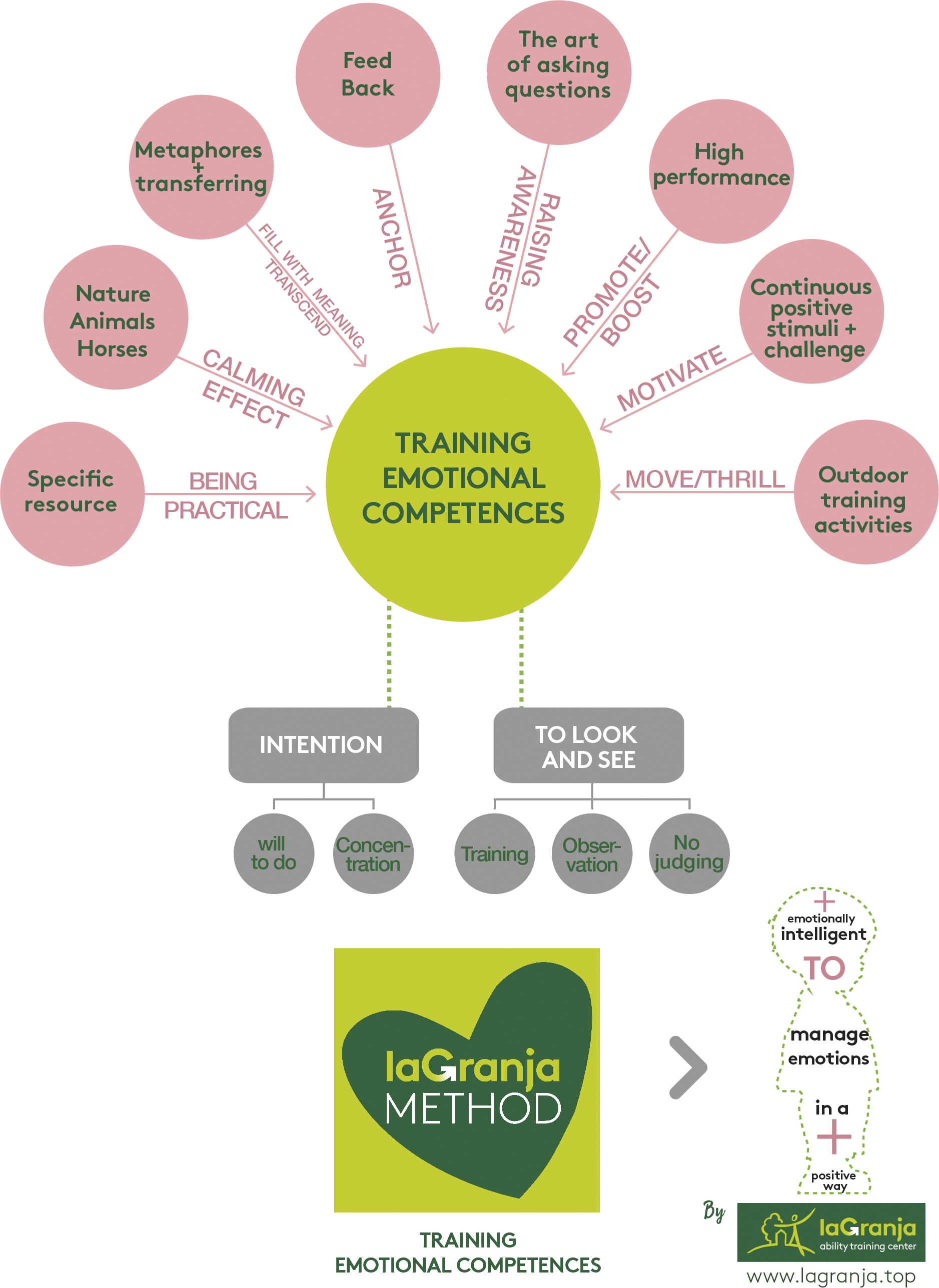emotional education, what we do at La granja that is different
The objective of La Granja Method is to train the emotional competencies of our students, and the best way to do so is with our Outdoor training activities due to their impact and ability to promote emotions in both children and adults. Behind every activity there is a specific intention that helps to bring us closer to our objective. In order to motivate, we seek to promote the feeling of joy, the most motivating of emotions, by proposing a challenge and using continuous positive stimuli. To enhance the Method and achieve results faster, we use high performance techniques thanks to the design of our programs and the focus that our educators place on the importance of what goes on “here and now”. The art of questioning helps our students become aware of what they usually do unconsciously, and feedback helps them anchor everything they have learned. Also, the use of Metaphors allows them to explore their subconscious, giving meaning to what happens within the group; and continuous transferences allow for everything they learn to be transferred to their everyday experiences at home or at school. Another important factor is our use of nature and animals to provide serenity to children and adults so they can truly experience the activities carried out.
Our theoretical framework is based on the 5 emotional competencies described by Rafel Bisquerra (Bisquerra i Pérez 2007) from the University of Barcelona: emotional awareness, emotional regulation, emotional autonomy, social competencies and abilities for life and wellbeing.
Our aim is to help children become more emotionally intelligent so they can learn to manage their own feelings in a positive way, and develop their personal and social skills for use now and in the future.
scientific publication of La Granja Method
Our study “Innovación de educación emocional en el ocio educativo: el Método La Granja” published in the Revista de Investigación Educativa, 38(2), 495-513. DOI: http://dx.doi.org/10.6018/rie.405721. The authors are: Gutiérrez-Lestón, C., Pérez-Escoda, N., Reguant, M. and Eroles, M. (2020).

